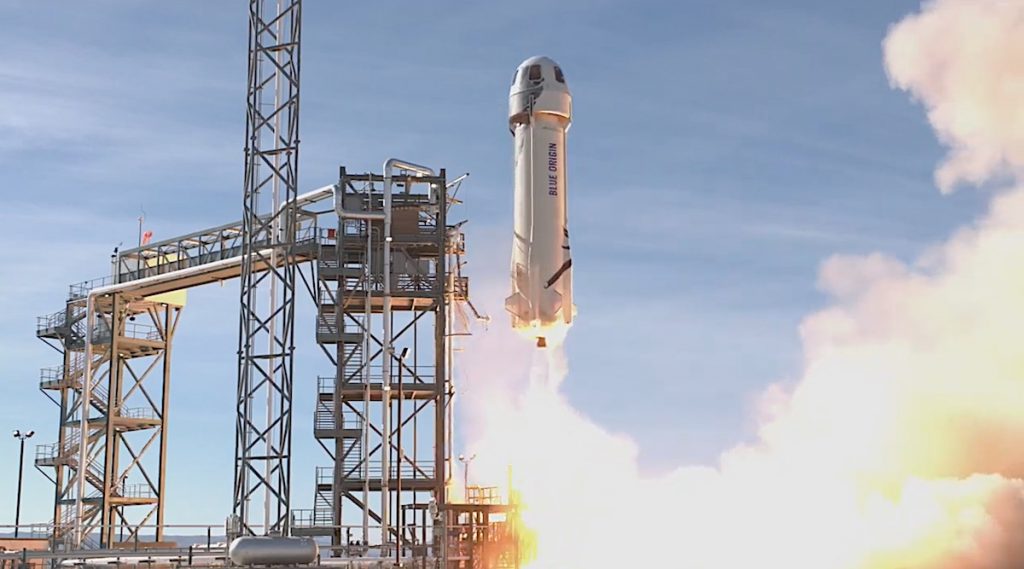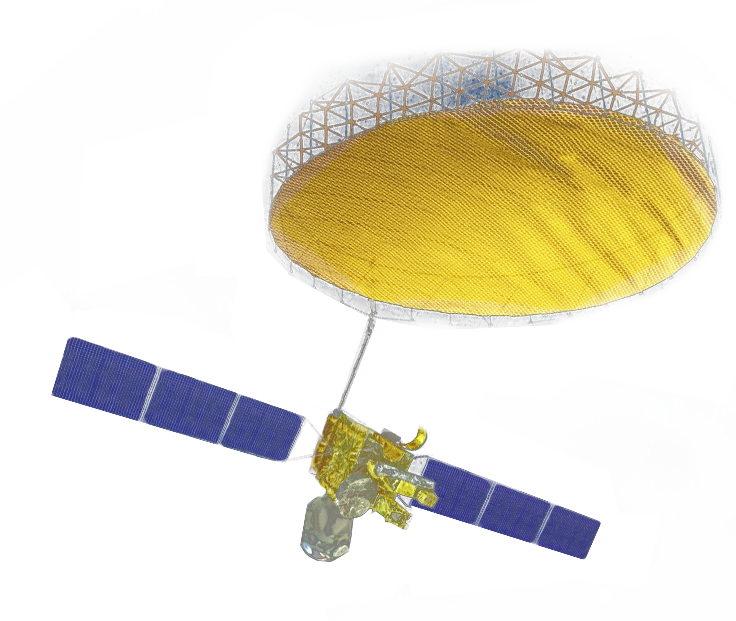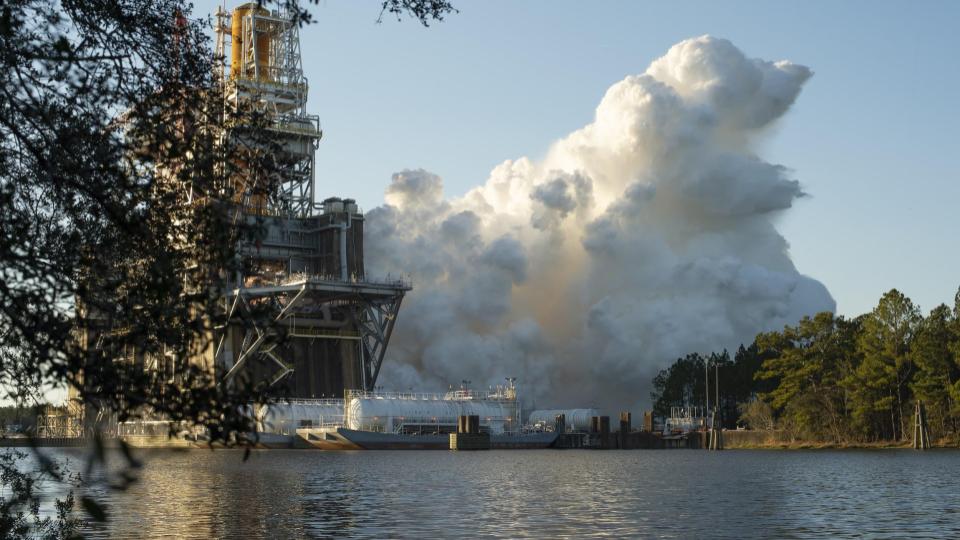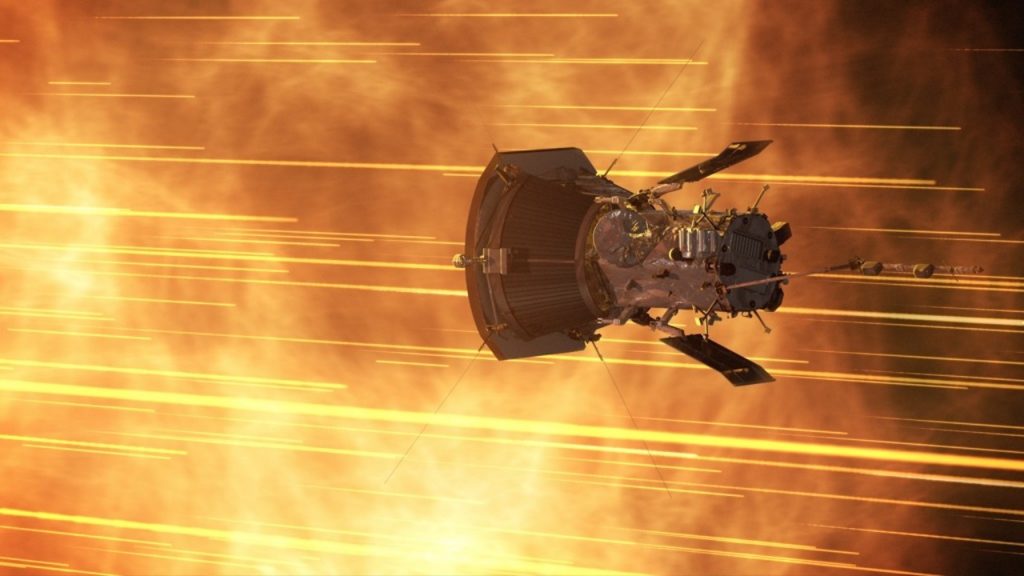Media
Summary
Join us for this week’s Rocket Roundup with host Dr. Pamela Gay as we look back at the launches that happened over the last week, including Blue Origin’s New Shepard, Virgin Orbit’s Launch Demo 2, one Chinese launch, and the Green Run test of the SLS.
Transcript
Hello, and welcome to the Daily Space. My name is Dr. Pamela L Gay and most weekdays I’m here to put science in your brain, but Wednesdays, however, are for Rocket Roundup. Let’s get to it, shall we?
First, SpaceX’s Cargo Dragon 2 that flew the CRS-21 mission launched on December 6th of last year, splashed down on January 14th at 01:26 UTC in the Gulf of Mexico, west of Tampa, Florida. The automated cargo capsule undocked from the International Space Station (ISS) at 14:05 UTC on January 12th carrying 2,002 kilograms of cargo.

The undocking was delayed by a day due to poor weather in the primary recovery zone in the Atlantic Ocean northeast of Daytona Beach.
Splashing down closer to Florida allowed SpaceX to return time-sensitive cargo to NASA’s Kennedy Space Center within just four to nine hours, compared to previous Dragon cargo missions that splashed down off the coast of Baja California in the Pacific Ocean taking several days to return to NASA.
This marked the first return of a Cargo Dragon 2 spacecraft. The new Cargo Dragon 2 is based on the Crew Dragon, but with a different pressure vessel to accommodate additional volume. Cargo Dragon 2 lacks the SuperDraco engines used for the Crew Dragons because it does not require the launch escape system and getting rid of them allows for more space in the capsule. However, Cargo Dragon 2 retains the fins on the Crew Dragon trunk. This is because changing the aerodynamics of the capsule is a major change. The fins also provide space for solar panels and radiators, necessary for spacecraft function.
Among the cargo returned were live mice from the Rodent Research 23 experiment and a dozen bottles of space-aged French wine. The wine bottles went up to the ISS on a Cygnus supply ship in late 2019 and spent more than a year on the International Space Station. Some of the bottles will be opened for a very exclusive tasting, while others will be analyzed to determine how it aged after more than a year in microgravity.
There were also 320 cuttings of grapevines as part of a privately-funded experiment led by Space Cargo Limited based in Luxembourg to learn how the plants adapted to the stresses of spaceflight. The knowledge learned from this experiment could provide insight into how to grow grapes in harsher environments on Earth.
On January 14th at 16:57 UTC, Blue Origin launched their New Shepard 14 mission from their Corn Ranch spaceport in Van Horn, Texas.

Both the capsule and booster were new. The capsule featured “astronaut experience upgrades” which included speakers in the capsule, microphones in each of the six seats cushioned wall panels to reduce ambient noise in the capsule, and an environmental control and life support system (ECLSS) to support the passengers including humidity and temperature controls to regulate temperature and prevent fogging of the windows.
As a reminder, this particular rocket is designed to one day carry tourists into space.
One other improvement to the crew experience on this flight was the addition of a two-degree per minute spin on the ascent, to allow passengers a full 360-degree view on the way up. More than 50,000 postcards contributed by Club For the Future (a Blue Origin sponsored club to encourage children to pursue STEM careers) were also carried inside the capsule. Mannequin Skywalker, an instrumented crash test dummy, was strapped into one of the seats. The capsule reached a height or apogee of 107 kilometers, while the booster reached a slightly lower apogee of 106 kilometers.
Total mission elapsed time was 10:10, and both capsule and booster landings were successful, though the booster touched down a bit off-center on its landing pad.
There is a new, demoed rocket in town. On January 17th, Virgin Orbit conducted their Launch Demo 2 mission of their LauncherOne rocket. The modified 747-400 Cosmic Girl lifted off from the Mojave Air and Spaceport in Southern California. It took off and headed south over the Pacific Ocean. Launcher One was dropped from the left wing of Cosmic Girl and climbed to orbit. Unlike the first mission, first stage burn, MECO, second stage burn, coast, and restart occurred nominally and Launcher One became the first air-launched liquid-fueled rocket to reach orbit.

Air launched orbital rockets are not new. The Orbital Sciences (now Northrop Grumman Innovation Systems) Pegasus rocket first flew in 1990, becoming the first privately developed orbital rocket of any kind. What makes Launcher One unique is the propellant. While it builds on the Pegasus design, Pegasus uses solid fuel on all 3 of its stages, while Launcher one uses liquid fuel on both stages, which allows it to more easily shut down its engines if it needs to. Basing the design on a Pegasus holds true to the pedigree of many of Virgin’s space vehicles. Burt Rutan, who designed SpaceShipOne and Two for Virgin Orbit’s sister company Virgin Galactic, also designed the wing on the Pegasus first stage.
Virgin Orbit originally planned to launch a dummy payload on flight 2, but after a lot of analysis and discussion with NASA, the decision was made to fly 10 CubeSats on the flight. This was under contract for NASA’s Venture Class Launch Systems (VCLS). These satellites are part of NASA’s Educational Launch of NanoSatellites (ELaNa) initiative, which is designed to attract and retain students in the science, technology, engineering, and mathematics disciplines. All were successfully deployed into orbit.
While we can’t talk about all ten of the satellites deployed by Launcher Demo 2, we do want to mention a couple of them.
The first is CACTUS-1, a 3U CubeSat from Capital Technology University in Laurel, Maryland. It will be carrying out two technology demonstrations: Project TRAPSat and Project HERMES.
Project TRAPSat is the main science component of the satellite, with a goal of trapping micrometeorites in an aerogel medium to better map the existence of micrometeorites orbiting the Earth.
Project HERMES will be the main communications component of the satellite flying under a different name – OSHComm. The Onboard Spacecraft Hotspot Communications Subsystem will communicate with the ground through satellite internet via the Iridium Constellation. This means that unlike conventional CubeSats, the communications coverage with the satellite will be global, 24/7, and accessible from anywhere with an Internet connection, allowing the CACTUS-1 team to command and receive data from their satellite from any computer, laptop, or smartphone at any time.
The other satellite we want to mention is TechEdSat-7, a collaborative engineering project between San Jose State University and the University of Idaho, with oversight from NASA Ames Research Center.
TechEdSat-7 is a technology demonstration mission that will further develop the Exo-Brake system by testing a High Packing Density Exo-Brake. In addition to Exo-Brake, it will demonstrate a CubeSat Identity Tag, or CUBIT, which is a DARPA RF-ID system that will aid in the identification of nanosatellites, including ones that have ceased to function.
If you would like to learn more about the other satellites in the ELaNa XX (20) mission, check out our show notes at DailySpace.org.
On January 19th at 16:24 UTC, China launched a Long March 3B carrying the Tiantong-1 03 satellite from the Xichang Satellite Launch Center in China.

The Long March 3B has 3 stages and 4 side boosters on the first stage. This is a truly impressive looking rocket. We have a link to the launch video on our website.
This mission carried a Tiantong-1 communications satellite successfully to orbit. This is the 3rd satellite in this constellation, joining Tiantong-1 01, which was launched in August 2016, and Tiantong-1 02, which was launched on November 12th of last year.
The Tiantong-1 satellites are geostationary mobile communication satellites operated by China SatCom and are the country’s answer to the Inmarsat network. They provide stable satellite phone coverage in all weather conditions for China and surrounding areas. Reportedly, they carry an S-band mobile communications payload with a large unfurlable dish antenna, which you can see depicted in an artist’s rendering on our website. They are fairly heavy satellites, weighing in at about 5400 kilograms.
Finally, for this week, the long-awaited Green Run for the Space Launch System Core Stage occurred on January 16th. The test was set for the afternoon, and after several delays, the 4 RS-25’s on the Core Stage finally ignited. They began what was supposed to be a 480-second burn, but the engines shut down after only 67.2 seconds. This was at the point where the stage computer was to start commanding the engines to go through Thrust Vector Control (TVC) checks, moving the engines around. Just before the moment of the shutdown, an engineer could be heard saying “MCF on Engine 4”. After the test abort, Wayne Hale, the last Shuttle Program Manager, took to Twitter to explain that MCF means Major Component Failure. “MCF means time to end an engine firing,” according to Hale.

It turns out the actual reason why the engines shut down had nothing to do with the MCF on Engine 4. According to a NASA blog update published on Jan 19th, the actual reason for the aborted firing was that one of the engine’s TVC systems exceeded its pre-set limits. The limit was intentionally set low to keep the vehicle safe during the ground firing and would not have resulted in a shutdown in flight, according to NASA.
This particular engine is actually the Core Stage they plan to use for the Artemis I first mission, which is set to go all the way to the Moon. This means that they are taking it easy during testing, trying very hard to preserve their hardware.
Before the test, NASA said that they needed at least 250 seconds of firing for a successful test. The test-firing had 23 objectives, and the 67.2 seconds of firing fully completed 15 of those objectives.
As of the update on January 19th, teams were still investigating whether a second Green Run was necessary to complete the objectives. The key to the decision is the fact that the SLS core stage is only designed to be tanked with its super-cold liquid hydrogen fuel a total of nine times. The vehicle has already been tanked three times, two wet dress rehearsals and the Green run. It will undergo another wet dress rehearsal when stacked at LC-39A, or Launch Complex 39-A, and will be fueled again at launch. All of these fuelings make it more difficult to decide whether to do another Green Run and as of press time a decision had not been made.
To wrap things up, here’s a running tally of a few spaceflight statistics for the current year, as of midnight Tuesday night:
Toilets currently in space: 5 — 3 installed on ISS, 1 on the Crew Dragon, 1 on the Soyuz
Total satellites from launches: 13
Total 2021 orbital launch attempts: 4
We keep track of orbital launches by where they launched from, also known as spaceport. Here’s that breakdown:
USA: 3
China: 1
There were two additional launches since midnight: a SpaceX Falcon 9 and an Electron. We will cover both these missions in detail next week.
Your random space fact for the week comes from CosmoQuest community member Uncwilly: During its closest approach to the Sun, the Parker Solar Probe will be traveling so fast that it could go from the Earth to the Moon in 50 minutes. New Horizons took 9 hours to cover the same distance after its launch.

Now to be fair to New Horizons, this zippy explorer did get sped up on its way to Pluto, in particular by a gravitational assist from Jupiter that helped it exceed 52,000 mph. Still, Parker Solar Probe is going closer to 300,000 miles per hour!
This tremendous velocity is required to allow the mission to fly past the Sun without the Sun’s gravity having a chance to pull it in. According to Jonathan McDowell, Parker’s most recent closest approach to the Sun, or perihelion, brought it within 8,400,000 miles of the Sun. This is the closest any man-made object has passed to the Sun.
This is not the closest or the fastest that Parker will go, however. In 2024 it will get within 3.8 million miles of the Sun while traveling at 430 some odd thousand miles per hour.
And when it happens we will bring it to you, right here, on the Daily Space. For now, though, this is all we have for today. Tomorrow we will be back with more space and astronomy and a rundown of what will be in the sky worth seeing this weekend.
Learn More
SpaceX Cargo Dragon 2 Splashes Down in Gulf of Mexico
- Image credit (Twitter)
- SpaceFlight Now article
Blue Origin Successfully Launches New Shepard 14
- Blue Origin press release
- SpaceFlight Now article
- Launch video
Launch Demo 2 a Success for Virgin Orbit
- Virgin Orbit press release
- CACTUS-1 info page (Gunter’s Space Page)
- TechEdSat-7 info page (Gunter’s Space Page)
China Adds Third Satellite to Tiantong-1 Constellation
- CASC press release
Test of Artemis 1 Rocket Misses Goals
- NASA blog
- SpaceFlight Now article
- Video
Random Space Fact: Parker Solar Probe
- Scientific American blog
- NASA press release
Credits
Host: Pamela Gay
Writers: Dave Ballard, Gordon Dewis, Pamela Gay, Beth Johnson, Erik Madaus, Ally Pelphrey, and Annie Wilson
Audio and Video Editing: Ally Pelphrey
Content Editing by Beth Johnson
Executive Producer: Pamela Gay
Intro and Outro music by Kevin MacLeod, https://incompetech.com/music/


 We record most shows live, on Twitch. Follow us today to get alerts when we go live.
We record most shows live, on Twitch. Follow us today to get alerts when we go live.